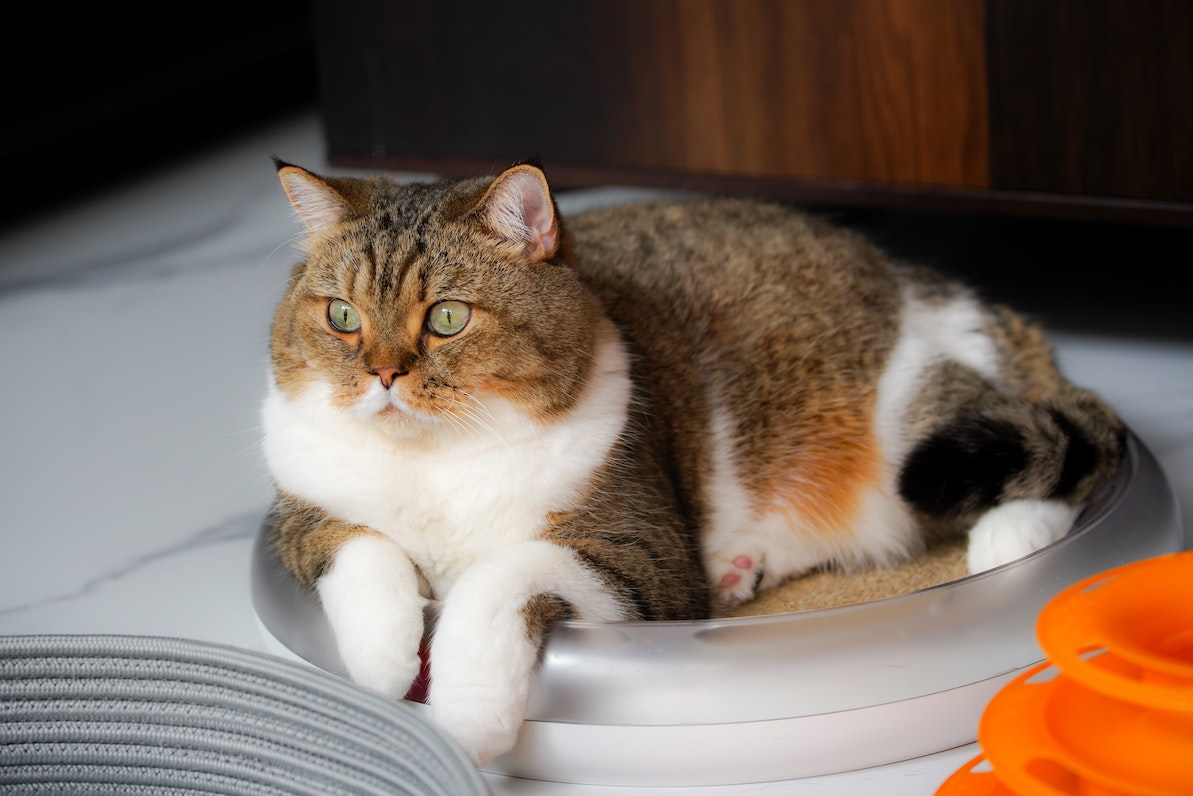Of course, when your beloved cat is diagnosed with a chronic condition like diabetes, it comes as a huge shock. But besides getting medical treatment from your vet, there are a few things you can do to make living with the disease easier for you and your cat.
How does diabetes manifest itself in cats?
Diabetes mellitus can affect not only us humans, but also our beloved pets. Cats with diabetes are either unable to properly produce or process the hormone insulin. Insulin serves to transport the sugar content (glucose) from the bloodstream into the body and thus supply it with energy. With type 1 diabetes, your cat can't produce enough insulin, causing her blood sugar levels to be too high. With type 2 diabetes, your cat's body is unable to properly respond to the insulin it produces, causing her blood sugar levels to also be too high.
However, since your cat's body still needs energy, it relies on fats and other nutrients to fuel itself. This consumption is reflected in weight loss and increased appetite. Meanwhile, the blood sugar levels in your cat's blood remain high and put a strain on the kidneys, which can no longer filter the sugar out of the blood properly. The excess sugar is transferred into the cat's urine, causing frequent urination, dehydration and excessive thirst. The strain on the organs caused by the high glucose level affects the cat's entire body and can lead to a wide range of health problems.
1. Weight management
Weight is a constant correlate to your cat's illness, so you should pay close attention to how her weight is changing. Weight loss is a symptom of diabetes and can be a sign that your health is deteriorating. If your cat has type 2, dieting can help reduce your cat's body fat and regulate insulin levels. (Nonetheless, you should continue to medicate your cat). Fluctuations in weight can therefore give you a better insight into the health of your cat. If your weight changes too much, you can quickly inform your veterinarian and, if necessary, initiate therapy.
2. Change in diet
As your cat's health changes, their nutritional needs may change as well. Therefore, there is also special food for diabetic cats, which should help to keep the blood sugar level at a stable level. Special diabetic food usually has a lower proportion of fats and carbohydrates. There are also no unnecessary added sugars. It contains more fiber and protein. In addition, it is recommended to switch from dry food to wet food, as this should contain fewer carbohydrates.
Important: Before you change your cat's diet, you should first clarify this with your veterinarian to rule out possible risks. This is especially true for cats that suffer from other diseases, allergies or other limitations in addition to diabetes.
3. Structure
Even if the first time after the diagnosis can be very confusing and stressful, it is important that you and your cat find a regular daily routine. If you feed your cat at fixed times, your cat can adjust to it physically and the likelihood that your cat eats its food right away increases. This is important if you are injecting your furry friend with insulin, as you can be sure it has eaten enough food. In addition, it is important to always feed the same food. Sudden changes can also alter blood sugar levels, putting additional stress on your cat.
4. Find the conversation
A diagnosis of diabetes can not only stress your cat, but also you. You're worried about your beloved pet and don't quite know how to deal with the change and the worries. But you are not alone. Whether it's your vet or other pet owners, engage in conversation with others. Some veterinary practices or animal clinics offer special consultation hours for small animal diseases or small animal nutrition, where you can have questions answered. You can also search online or in your personal circle for other pet owners who also have a diabetic cat and talk to them about life with a sick animal.
We hope this blog has given you some tips on how to care for your cat. If you want to learn more about cat health, feel free to read more blog posts and subscribe to our newsletter so you don't miss anything! 😊



